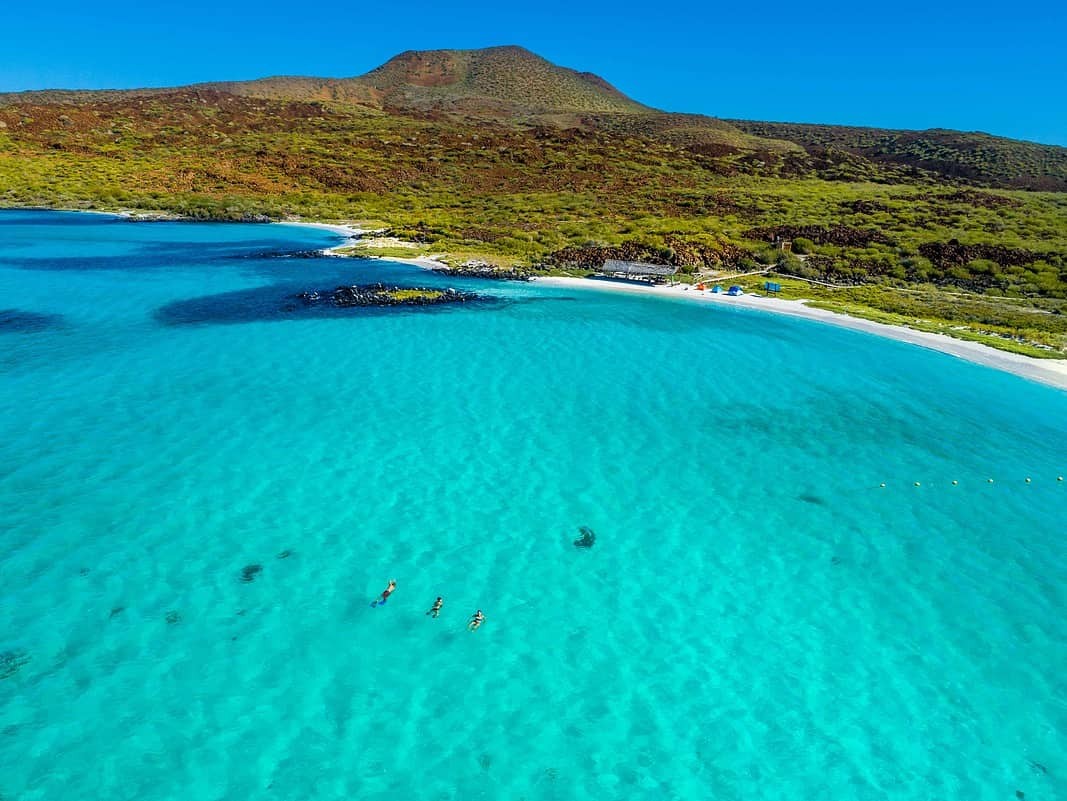Divers are well aware of the wonders of the Sea of Cortez. The azure waters host more than 900 varieties of fish, numerous marine mammals, and countless sea creatures that attract ocean enthusiasts all year round. However, a tranquil destination in Baja California Sur is relatively unknown: Loreto.
Away from the lively hype and crowds of popular tourist sites, Loreto is a small, traditional Mexican town that beams from its abundance of wildlife, beauty, culture, and history. It’s also home to Mexico’s second-largest marine protected area, where the diversity of rocky terrain, wrecks, and rich aquatic life offer incredible diving.
It has plenty of indulgences for those who crave wildlife encounters and adventures.
Location
Loreto, Mexico, is a hidden gem located on the eastern coast of the Baja California peninsula. Nuzzled between the majestic Sierra de la Giganta Mountains and the Sea of Cortez (Gulf of California), the quaint town has a population of around 20,000 people and one stop light. The impressive site boasts a dramatic and captivating landscape where the multi-hued desert colors and rugged rocky islands contrast with the varying shades of blue in the sea.
In 1996, the Loreto Bay National Park was created to protect and conserve its “rich marine and terrestrial biodiversity, its ecological processes and its stunning natural beauty.” It covers nearly 800 square miles (2,065 square kilometers) of sea, five uninhabited islands (Carmen, Coronado, Danzante, Monserrate, and Santa Catalina), and ten islets. It has since been designated a UNESCO World Heritage Site along with all the other islands in the Gulf of California. The ecological importance of this natural wonder is evident when you visit.
Isla Coronado Beach
The islands were formed from volcanic activity and tectonic movements, resulting in striking cliffs, rocky peaks, lava structures, and unique terrain that are impressive above the sea and mirrored underwater with vertical walls, pinnacles, giant rock formations, lava finger reefs, and seamounts covered in colorful living gardens of sponges and soft corals, such as sea fans and gorgonians.
This ecosystem provides a habitat for more than 80% of the Pacific Ocean’s species, including tropical reef fish, pelagic and seasonal varieties, dolphins, sea lions, turtles, moray eels, migrating animals like whale sharks, and nine different whales, including humpback, orca, and blue whales. Numerous macro critters like nudibranchs, sea stars, urchins, crabs, and lobsters find shelter in the many ledges and crevices.
Loreto was settled by the Jesuit missionaries in 1697 and served as the first capital of the Californias. It retains its traditional charm with cobblestone streets, colonial architecture, museums, and missions. The Mexican government selected it as a Pueblo Magico (Magic Town) for its “magical” qualities. There are 132 towns in Mexico with this designation for their preserved cultural heritage, natural beauty, historical significance, and unique allure. I was enchanted.
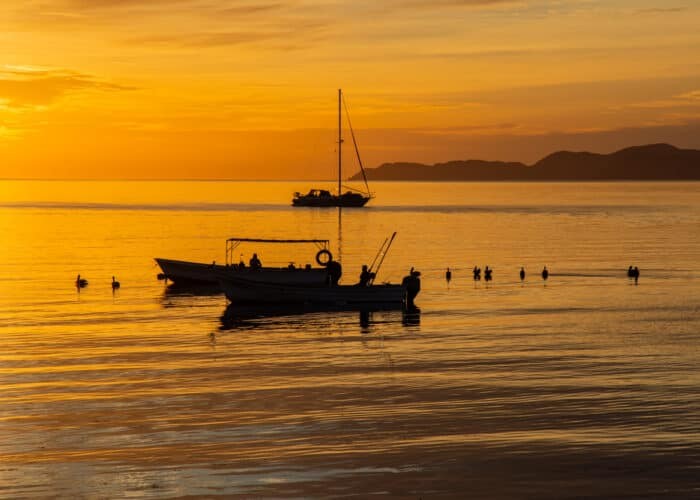
Each morning, I strolled down to the malecon, just a few blocks away. Since Baja is on Mountain Standard Time, and I was operating 2-hours ahead on Eastern time, I was wide awake before the roosters started kee-kee-ree-keeing. The sounds of church bells of the Mission of Our Lady of Loreto (Misión de Nuestra Señora de Loreto) flowed like an audible current through the quiet streets. The marina was the first part of town to awaken, with fishermen hauling bait into their boats while pelicans circled overhead, strategically dive-bombing for scraps. As the sun rose, the golden yellows and oranges stretched across the bay, making silhouettes of the fishing boats and sea birds gliding over the glassy water.
Here, we met our dive operator – Loreto Sea & Land. They had already prepared the tanks and gear, which were set up in a panga that comfortably fit up to 12 guests. They have everything to rent, including wetsuits of different thicknesses, depending on the time of year.
Since it was June, they recommended a 7mm garment due to the current temperatures in the low 70s °F (~ 21°C). As the year progresses, the water warms up through October and averages in the high 80s °F (~30 °C). Before we arrived, they had requested my dive certifications and sizing. This was my first dive trip in over a decade, and I decided not to bring all my dive gear, only my mask and dive computer.
Carmen Island’s Blue-Footed Boobies and a Ghost Town
The biggest among the five islands is Carmen Island, which offers plenty of inlets, coves, and various locations for diving. On land, you can explore a deserted town called Bahia Salinas, which used to be a salt mine that stopped operating in the 1980s. You can still view the machinery, warehouses, houses, schools, banks, and cemeteries. Nowadays, the island is a private reserve where permitted visitors can hunt Desert Bighorn Sheep, a prized and expensive trophy.
During our 50-minute boat ride to the island’s north side, the bay was serene and flat like a tortilla. The water shifted colors from deep cobalt to brilliant turquoise, providing a beautiful contrast against the white limestone cliffs and red-brown volcanic rocks. A large pod of more than 50 bottlenose dolphins leisurely glided along the surface with graceful, unhurried movements. We were also delighted to see blue-footed boobies perched atop the “snow” (as our guide jokingly called it).
I assure you that it was not snow!
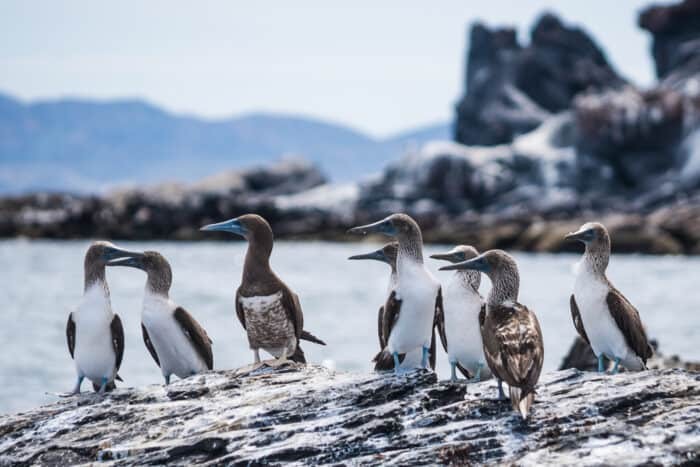
Our first dive site was El Sombrerito. Admittedly, the clarity of the water was a bit cloudy, though the vibrant reef life was unmistakable. Typically, the visibility is 50 feet (15 meters) or better throughout the year. While we were diving, the dolphins had already moved away, but their playful squeals stuck around for the first part of the dive.
During our diving expedition, we were accompanied by Rafa, an experienced dive guide who has been exploring this sea for decades. He shared his journey of shifting from solely focusing on larger marine life to appreciating the beauty of smaller creatures after observing birds feeding on bugs. He shares, “There is the same value for the goby as the shark,” and we can “connect with the ocean when we sit there and watch.” As we explored the second site, Islote La Vaca, with less visibility than the first dive, we had an opportunity to connect with arrow crabs, little fish hiding in the corals, and other small life cohabiting the reefs.
We also witnessed a visible thermocline, causing a rippling blurriness in the water. Although I learned to dive in colder temperatures in southern California after diving in the warm waters of Mexico and Miami for the past few years, I hesitated to cross the thermocline and opted to hover above it. I was very content with the provided 7mm wetsuit. After the dive, we enjoyed a satisfying meal of guacamole, quesadillas, and burritos prepared by Capitan Tequila while warming in the Mexican sun.
We explored the town after our diving adventure, admiring the vibrant exteriors and indulging in a cocktail or two. Although we didn’t have time for all the activities available, several noteworthy options exist. The nearby Sierras have incredible hiking through canyons with waterfalls and even prehistoric cave paintings from indigenous civilizations dating back over 7,000 years. There is no shortage of water activities, from paddleboarding and kayaking to snorkeling and sunbathing on the many beaches. Sport-fishing is also popular, with marlin, yellowfin tuna, dorado, seabass, snapper, and more.
Loreto offers delightful options for food lovers as well. The seaside town serves up distinctive cuisine and drinks. We had dinner al fresco at El Zopilote Brewing Company, a craft brewery and restaurant that serves beers on tap with names like Snakebite IPA, Tombstone Pale Ale, or Bandido Medium Stout. Loreto is a sleepy town with no real nightlife. Most lights are out by 10 p.m. And with little urbanization, stars upon more stars decorate the black night sky.
Rugged Landscape of Isla Danzante and the Melgar Wreck
On our next excursion, we were entertained by the “Dancing Island.” Danzante is marked topside by La Ventana (the window), an arch etched in its jagged and rocky landscape. It is the smallest of the five islands, only 1.5 square miles (4 square kilometers), but it has magnificent secluded beaches and breathtaking hiking trails. Back-rolling into our following dive site, Punta Eleonora, a smack of jellyfish awaited our entry. It was time to let the air out and descend.
Our route took us over enormous boulders and around a vertical wall resembling a forest of soft, fan-like corals with diverse colors. I was thrilled to spot so many nudibranchs and giddily watched one cannonball off the wall and sway to the ledge below. I also stumbled upon an octopus hiding in a crevice and some bright crimson-red sea stars sprawled on the boulders.
This location also offers opportunities for greater depths with deep walls and the chance to see larger animals. Unfortunately, while diving, we didn’t see anything larger than a stingray, but we did find two corkscrew-looking Mexican horn shark eggs.
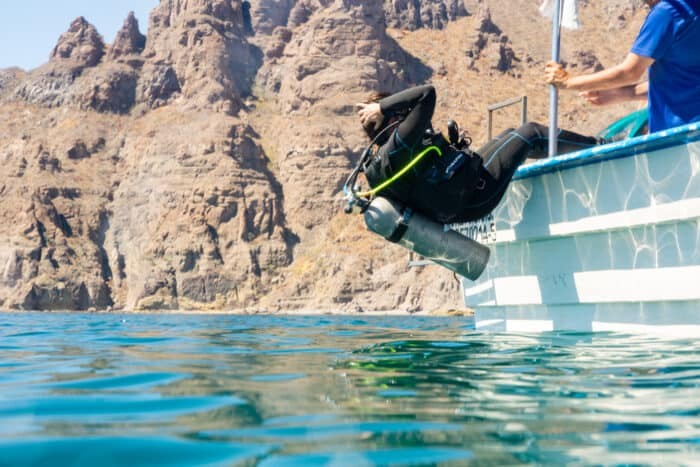
There are a few wrecks in Loreto Bay, and we elected to dive the Agustin Melgar C-54, a 180-foot (50-meter) minesweeper resting in 80 feet (~24 meters). She was sunk in 2000 to create an artificial reef and is now covered with soft corals and healthy fish counts. Visibility on the wreck resembled mucus floating in green broth, a flashback to diving the Yukon in San Diego.
However, the wreck revealed herself and her many easy swim-throughs. I imagine this would be an even more exciting dive with better visibility. As always, Loreto Sea & Land had a Mexican feast prepared for lunch, featuring two types of tamales. I couldn’t peel the corn husks off fast enough.
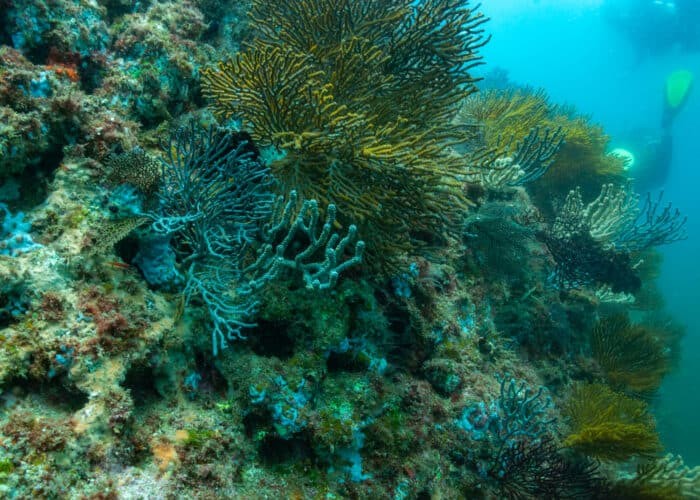
In Mexican fashion, Loreto has authentic, regionalized dishes that feature fresh seafood and local ingredients. Their most popular one is the almejada tatemada (charred clams), starring the local chocolate clams. Despite its name, the chocolate clam’s shell is smooth and brown, not chocolate-flavored. To prepare the dish, the bivalves are buried in sand and roasted to give them the toasted flavor. The fun is in cracking the hand-sized shells on a rock to reveal the perfectly charred clam, which is then combined with a tortilla and cream sauce. Hotel Oasis, a bayfront property with a private beach, hosts a buffet with an assortment of shellfish and the opportunity to savor the flavors of Loreto.
Sea Lions, Volcano, and White Sand Beaches at Isla de Coronado
Located at the northern edge of the national park, Coronado Island is a dormant volcano whose geological formations provide a lively habitat for a colony of sea lions. We were welcomed by two synchronized pinnipeds basking at the surface. Typically, more sea lions can be found sunning on the rocks and frolicking in the water. The island also offers excellent birdwatching opportunities, with frigates, pelicans, osprey, and other birds to be spotted.
Above the water, the volcanic terrain looks other-worldly from the dramatic lava formations whose ‘fingers’ extend deep into the sea, creating walls, caverns, ledges, and crevices that are covered in a forest of sea fans and black coral as far as I could see. La Lobera was our final and my favorite dive site. It is apparent why Jacques Cousteau called the Sea of Cortez the “Aquarium of the World.” It was like swimming inside an aquarium.
The schools of tropical fish like angel fish always turning sideways to show their beautiful colors, a grouping of yellowtail surgeonfish pecking the reef in unison, moral eels reeling around the rocks, the shy pufferfish hiding below a ledge, scorpionfish frozen on the rock… ok, I won’t list the 900 species, but hopefully, you can imagine.
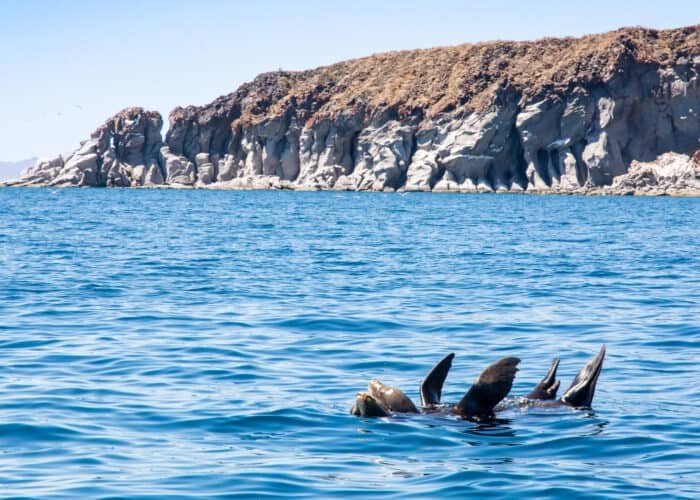
Encircling the island, we anchored at a white sand beach, an idyllic spot for lunch and an opportunity to swim with various rays. We spotted a few stingrays, eagle, and bat rays separately. Generally, there are much larger groupings. This island is closer to Loreto than the others, so the travel was minimal, around 20 minutes.
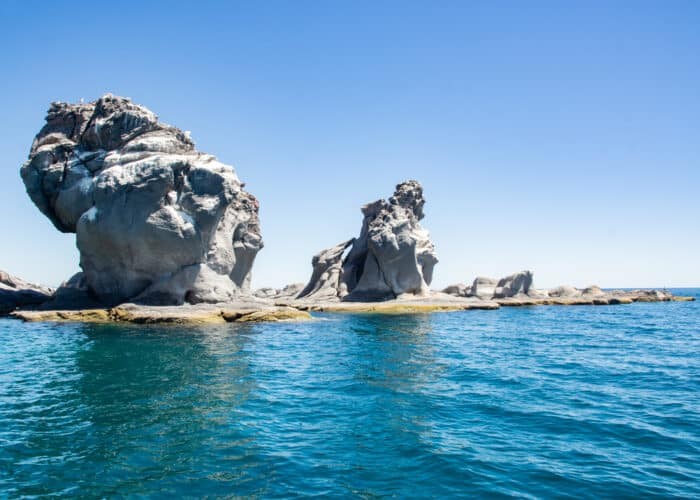
We took a scenic drive south to Puerto Escondido for another evening of gastronomical adventures. La Brisa | Pizza + Bar serves American-Mexican fusion dishes and pizzas, as the name suggests, in a pleasant atmosphere with live music. Watching the sun disappear behind the impressive mountain range was a ceremonious finale to our week.
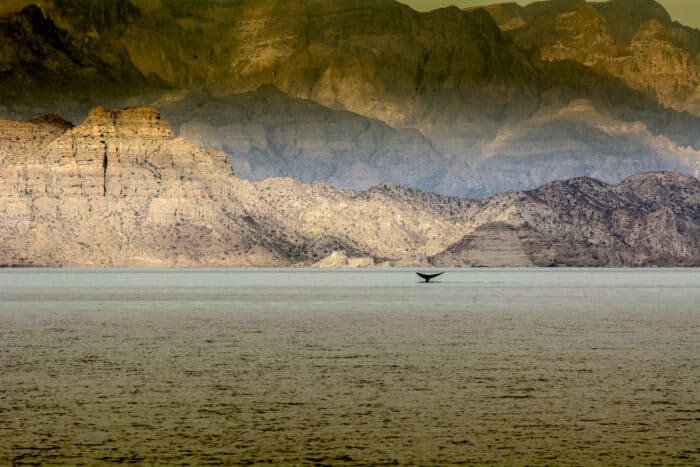
What You Need To Know: Loreto
Getting Here
Loreto has an international airport (LTO) with flights from Los Angeles (Alaska); Phoenix or Dallas (American); Calgary, Canada (WestJet); or Tijuana, Mexico via inter-Mexican airlines (Volaris, Calafia). It is also possible to drive the stunning coastline from Los Cabos (~ 7 hours) and La Paz (~ 4 hours). From Tijuana, it’s estimated to be a 16-hour drive.
When to Go
Loreto is enjoyable year-round, with plenty of activities and wildlife to discover. The best time for scuba diving is July – November when the water is warmer (80-88°F / ~27-31°C) and clearer. The weather heats up during the summer with highs in the 90s °F (~32°C). While the climate is typically dry, the rainy season is during this time, though it is minimal, with only a few rainy days during these months. October is noted as the best month as the air temperatures cool and the water is still warm.
In the winter months, January to April, the air temperatures are in the high 60s and low 70s °F (~20-23°C). Water temps can drop to 60°F (~15°C). The northerly winds make for choppy seas, so diving may not be possible, though this is when whale watching is possible.
Diving
Loreto has dive sites for varying interests and every dive level, from the beginner to the technical diver. For the latter, gas mixes may be organized in advance.
There are three dive operators in Loreto: Blue Dolphin, Dolphin Dive Baja, and Loreto Sea & Land. Each offers competitive dive packages in addition to gear rentals, certifications, or various other tour activities and boat cruises.
Tipping is customary, with 10-15% of the trip price being reasonable and appreciated. Marine Park Passes are required and generally included in the diving package. However, if you go out on your own or to the beach (it is part of Loreto Bay), a pass can be purchased at the marina snack shop ($4.50 USD / 90 MXN).
Where to stay
Many hotels and Airbnb’s are within walking distance of the marina. Most are run and operated by owners who become your hosts, providing an intimate connection to the town.
I stayed at La Posada de las Flores. It’s a charming boutique hotel located in the town square. The large wooden doors open to a colonial-style courtyard with stone columns, arches, a fountain, and a staircase that spirals up to the rooftop deck and glass-bottom pool (yes, you can see from the courtyard!!!). The rooms are spacious with AC, a mini-fridge, a TV, and a walk-in shower. The hosts were fantastic and helpful. While beautiful and comfortable, the staircase does not make it easy to transport gear.
Find Out More
You can learn more about Loreto and how to book your dive adventure (and more!) at Visit Loreto and Visit Baja California Sur.

